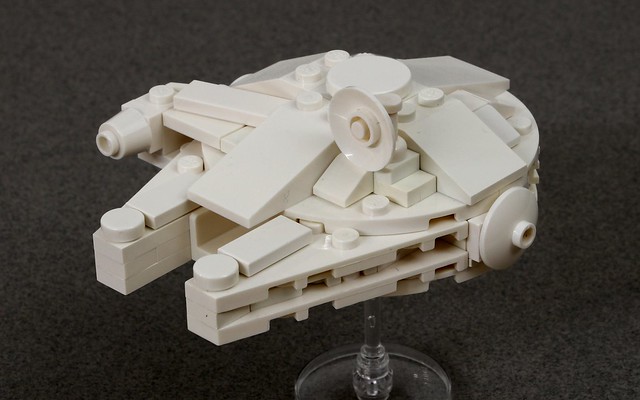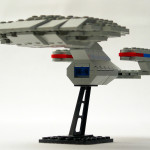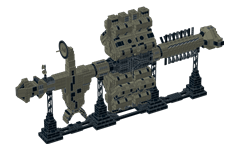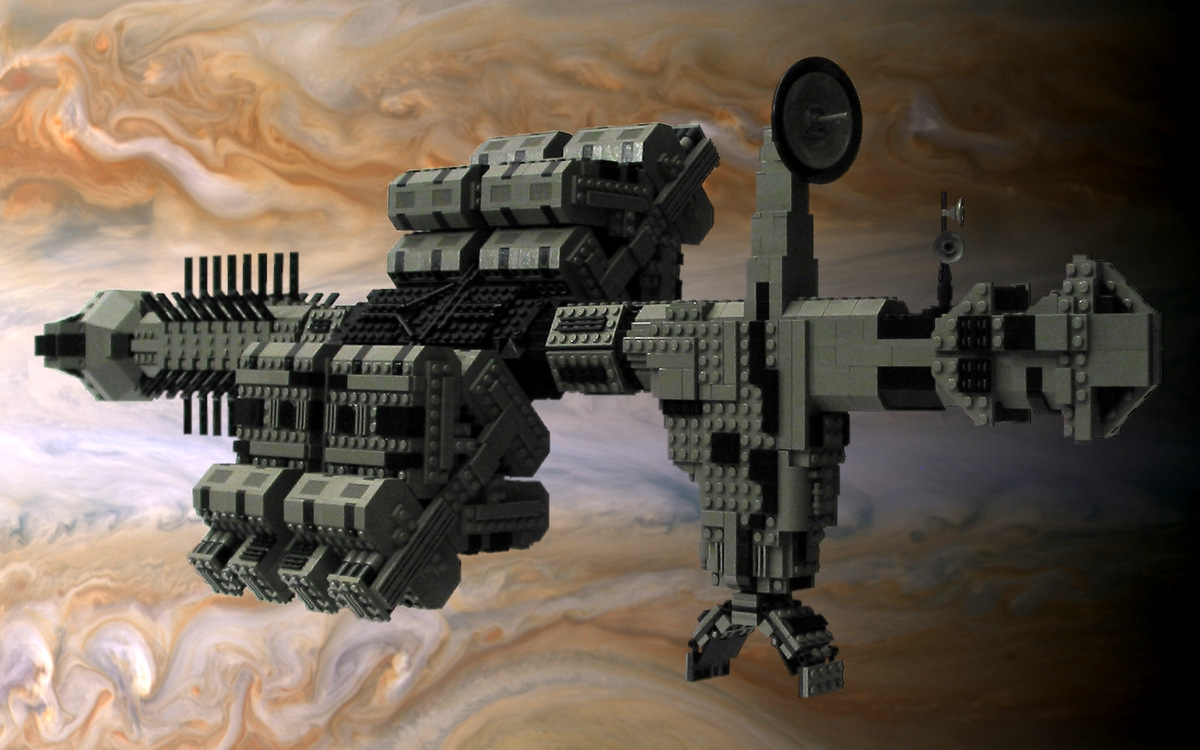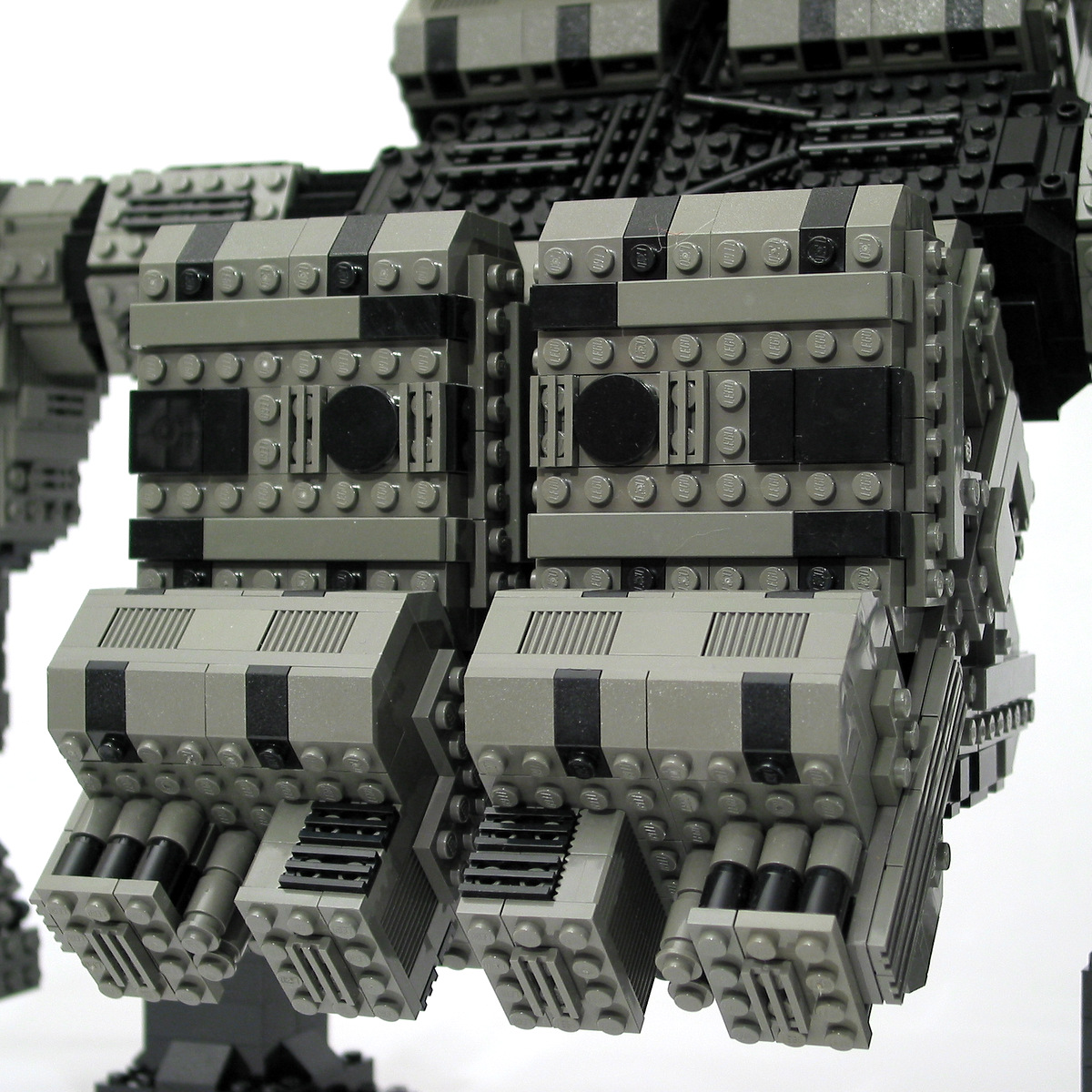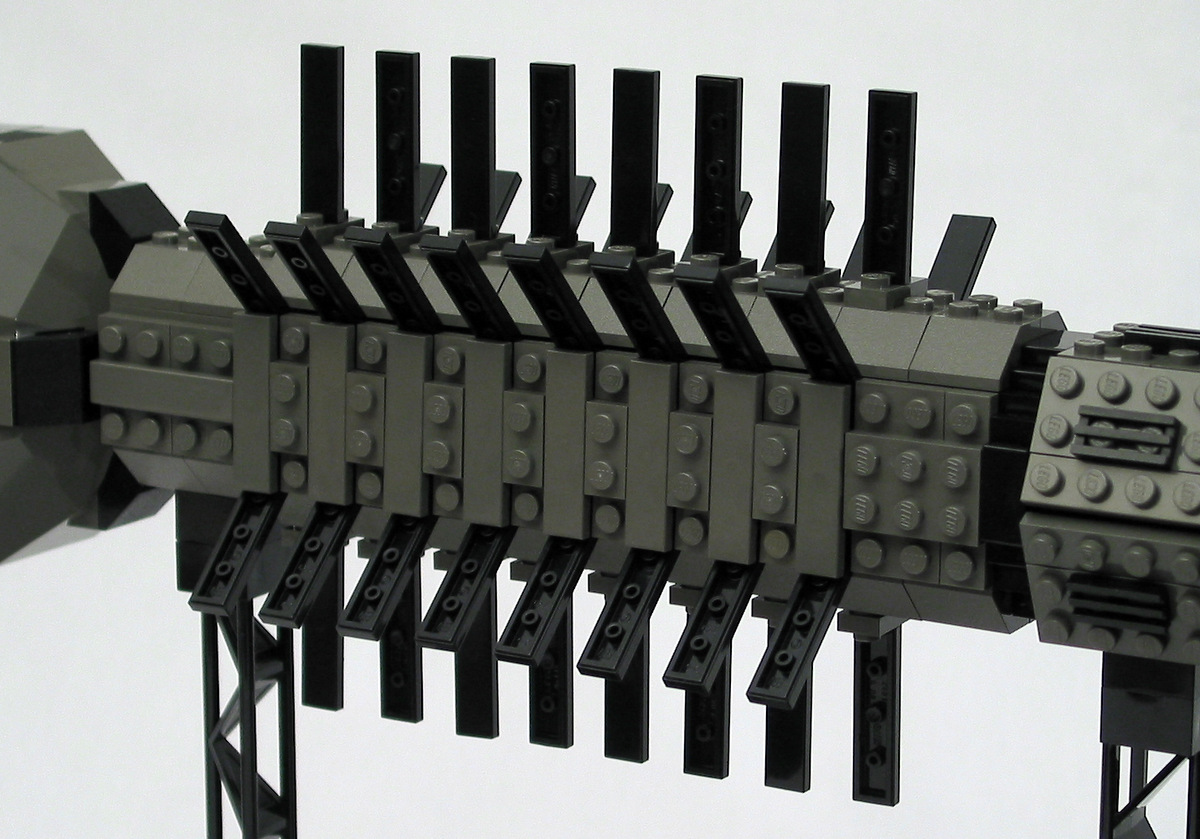If you’re not active in the online LEGO community, you may not be familiar with SHIPtember, wherein participants are challenged to build a large spaceship during the month of September. More specifically, the challenge is to build a spaceSHIP (Seriously Huge Investment in Parts) that must be at least 100 LEGO studs long. My friend Michael and I have long wanted to participate in this building challenge, but neither of us has been willing to commit the time and effort to it… until now.
One of the things that dissuaded us from participating in past years is that building a SHIP in a month typically means saying goodbye to all of your free time for that month. Michael suggested we tighten the timeline, turning it into a 24 hour marathon, and join forces with Kristal and Lucie, with the goal of building a SHIP over 200 LEGO studs long.
We started at 9:00 am Saturday morning, with the intention of building for a full 24 hours. Unfortunately, by the wee hours of the next morning it was clear our abilities were becoming severely hampered. Case in point, the core and exterior of the rotating habitat rings (my responsibility) have a bit of an unfinished look to them, and I would have loved to have spent the last few hours fleshing out the details of those areas. It just wasn’t happening though. We decided to call it a wrap after 21.5 hours and here is the result, the NCS Aries-K, serving all your Minifig’s needs on their trips to Mars!

It was a wonderful building experience, with a lot of fun, excitement and collaboration. Would I do it again? Probably not for 24 hours, but the idea of marathon building intrigues me. It really forces you to get to it, without spending hours agonizing over the little details.
If you are interested in seeing more of this ship and how it came together, I put together a couple of videos of the event. Here is one documenting the build session.
And an overview of the finished ship.
If you’d like to see the raw time lapse videos, Michael has posted them on his channel at brick dimensions.
Camera 1 – Camera 2
We broke down the building responsibilities roughly around our various areas of expertise, and this is how it worked out:
Michael – hanger bays, bridge and electrical engineering
Me – habitat rings and mechanical engineering
Kristal – engine and interiors
Lucie – interiors and crew
And here are the final specs of the ship:
– Dimensions – 237 x 90 x 90 studs (over 6 feet long!)
– Rotating habitat arcs powered by 2 Power Functions XL motors, with fully detailed interiors.
– Rotating crew accommodation ring powered by 2 Power Functions M motors.
– Rotating engine core powered by 1 Power Function M motor and illuminated by 3 RGB LED lights
– 2 forward hangar bay decks for receiving small spacecraft.
– 27 blinking navigation lights across the entire ship, including red/green port/starboard markers, white/red fore/aft lights on the arcs and white/red strobe navigation lights.


